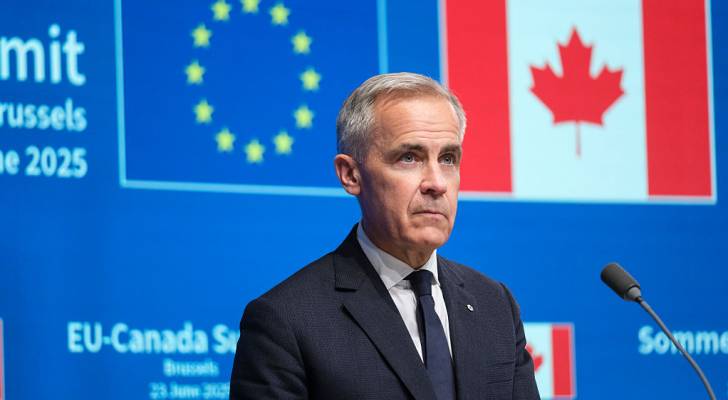
Prime Minister Mark Carney’s plan to slash $25 billion from annual federal spending has triggered widespread concern as the country grapples with rising unemployment and a weakening job market. Economists warn that the timing of deep public service cuts couldn’t be worse.
Canada’s unemployment rate rose to 7.0% in May, the highest outside pandemic years since 2016. That translates to roughly 1.6 million unemployed Canadians — a 14% increase year-over-year. And while the economy added 8,800 jobs in May, nearly all the gains were in part-time work, offset by steep full-time losses.
Against this backdrop, the federal government is directing departments to carve out savings of up to 15% by 2028/29 — excluding only the Department of National Defence, RCMP, and Border Services Agency, which face a smaller 2% target. The scale of the review is nearly double what the Liberals campaigned on and is now widely expected to result in thousands of public-sector layoffs.
Already, the federal workforce has shrunk by 9,807 jobs since early 2024, with the Canada Revenue Agency (CRA) accounting for more than two-thirds of those cuts.
What to expect
Canada’s aggressive federal cost‑cutting plan could prompt sweeping job losses in the public sector just as unemployment hits a multi‑year high and trade‑sensitive industries reel.
Key points:
- Canada’s unemployment rate climbed to 7.0% in May 2025, the highest since September 2016, equating to about 1.6 million unemployed — a surge of nearly 14% from a year earlier.
- May’s modest gain of just 8,800 jobs, with 58,000 full‑time hires offset by a 49,000 jump in part‑time layoffs, underscores a weak labour market
- Meanwhile, federal public‑service shrank by 9,807 positions through March 2025 — 68% of the losses from the Canada Revenue Agency (CRA) alone.
The fallout could impact services and compound already high national unemployment.
Sharon DeSousa, president of the Public Service Alliance of Canada, says the rushed pace of the spending review threatens not only public service jobs but also the services Canadians rely on. “At the end of the day, we’re not a business — we’re a government that delivers services,” she said.
Economist David Macdonald of the Canadian Centre for Policy Alternatives called the cuts “the deepest since the Chrétien era,” warning they could touch Indigenous services, non-profits, and foreign aid. “There’s a lot more on the table now,” he said.
Economic ripple effects
“This is unprecedented in modern times,” said Kevin Page, former Parliamentary Budget Officer and president of the Institute for Fiscal Studies and Democracy. “These cuts will have a ripple effect across the economy.” Page noted that with Ottawa pledging an additional $40 billion annually to defense by 2035, other departments will be squeezed harder.
Yet, these cuts are not unexpected. As Bank of Governor, Tiff Macklem stated: “The job market is weakening.” His reference is to the rise in layoffs in export‑anchored sectors — especially manufacturing — and declining demand. Manufacturing alone lost 55,000 jobs since January, largely driven by U.S. tariffs and global trade uncertainties.
Public service job cuts escalate the risk of further unemployment as hundreds of thousands rely on federal employment. Over 1 in 4 public‑sector workers cited expectations of workplace downsizing in a recent StatCan survey — especially worrisome as Carney’s plan targets operational budgets.
Broader labour market trends
- Youth unemployment soared: May’s returning students (aged 15 to 24) faced a 20.1% jobless rate, matching 2009 recession peaks.
- Average wages continue modest growth (a gain of 3.4% year‑over‑year in May), but dwindling opportunities threaten future gains.
- Job growth has stagnated since early 2025, with net gains concentrated in retail, finance, and utilities — while public administration, transportation, and construction saw substantial declines.
Economic risk
Despite modest wage growth of 3.4% year-over-year, the job market is under pressure, and households are beginning to pull back on spending — a signal of the broader economic strain faced by most Canadians.
As Carney’s government works toward delivering its first budget this fall, all eyes will be on whether the promised savings materialize — and at what human cost. With a faltering labour market and rising job insecurity, many fear that the government’s belt-tightening could become a drag on recovery rather than a path to stability.
The result of the current rise in unemployment, a potential Bank of Canada rate cut if the job slump continues, along with reduced consumer spending, lower tax revenues, and strained public services is that the already slow economic growth for the country could actually fall below the 1.6% pace projected for 2025.
Bottom line
As Ottawa moves forward with fiscal downsizing, Canada’s labour market shows signs of distress: unemployment nearing 7%, public‑service downsizing, and youth unemployment spiking. The financial toll could extend far beyond federal offices — pressuring domestic demand, inflation, and the broader economy.
This article provides information only and should not be construed as advice. It is provided without warranty of any kind.